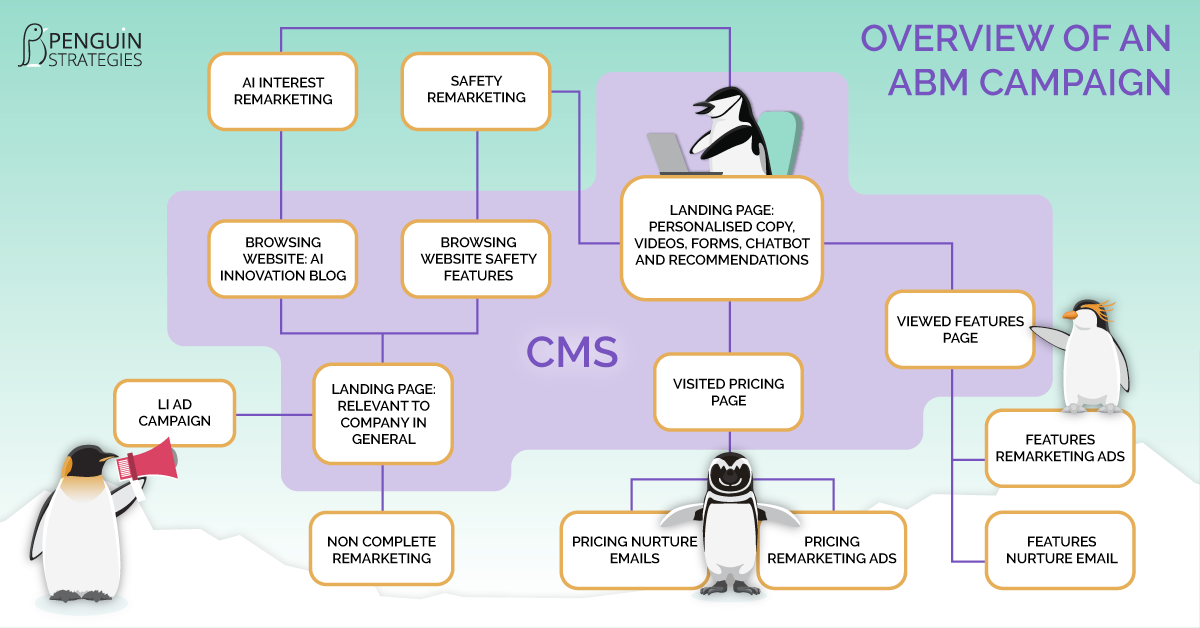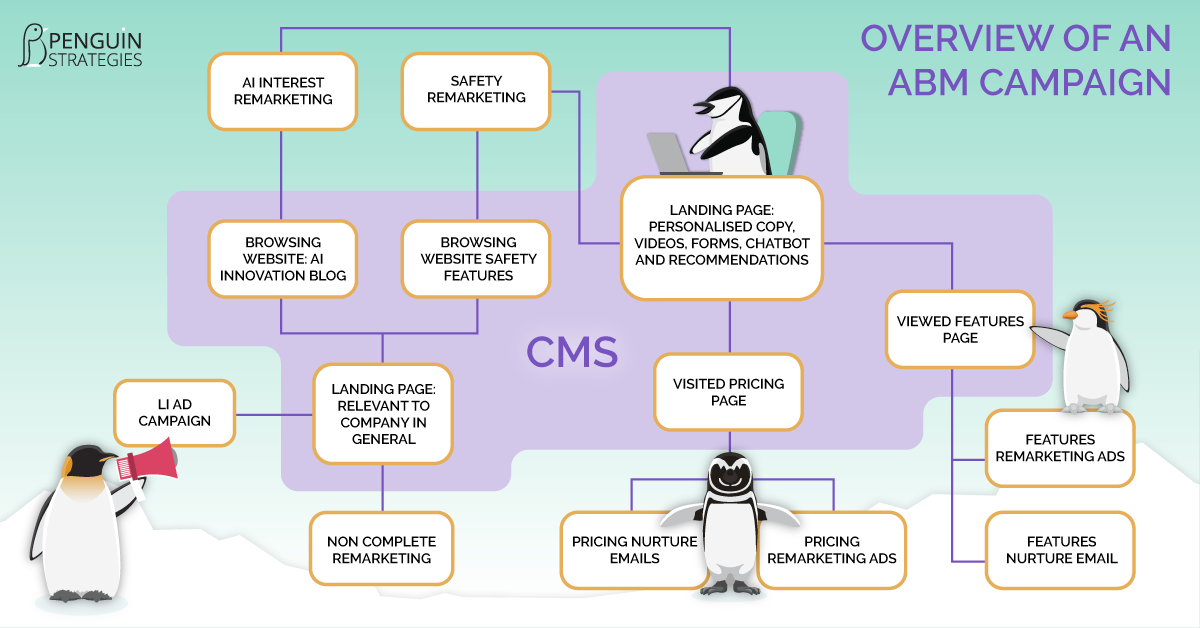
Account based marketing, also known as ABM is an incredibly effective method of reaching a very targeted list of potential clients. This method is primarily used when you're looking to target a very small audience, usually in the low hundreds of potential clients.
Account based marketing will drive high-potential leads through your flywheel or funnel with hyper targeted campaigns tailored to high potential accounts. ABM campaigns will pre-define the list of companies and even people you are targeting and enhance their engagement with your assets. This will not only maximize your interaction with high-value accounts, but also keep your marketing and sales teams aligned while delivering consistent customer experiences and streamline the sales cycle.
Maximize your interaction with high-value accounts, keep your marketing and sales teams aligned, deliver consistent customer experiences and streamline the sales cycle.
Many people think of LinkedIn as the core of an ABM campaign. It's by far the best platform for targeting the exact people you want based on company, job title etc.
Here is an example of how to use your CMS to the max in an ABM campaign sell smart sensors to OEM Auto makers:

1. Top of Funnel LinkedIn campaign
You run a LinkedIn campaign targeting roles responsible for Engineering, AI, Compliance, Finance and Safety at Ford. While these people have various roles and interests in the company, the common denominator for them all is that they work at Ford, and the sensors used in the cars have an effect on their work.
Since you need a certain sized audience in order to run a campaign, you can lump all these roles in one campaign with 4 ads, one speaking to each of these roles. These campaigns can all lead into a landing page that talks about the benefits of these sensors at Ford.
2. First website touchpoint
One of your targets at Ford sees your campaign, clicks on an ad and reaches a landing page that is dedicated to this campaign. The design, colors, pictures, language and general feel of the page let the visitor understand that this product would be PERFECT for Ford. For example, you might have a claim that on a 2 ton SUV like a Ford Explorer going 60 MPH, these sensors can reduce braking distance by 30%. This speaks right to the audience you are targeting and gets their attention.
3. CMS personalization
At this point you have 3 options to tag the person's role for more personal marketing.
- Based on the ad they clicked
- By asking them on the form they filled out
- Based on their activity
On the landing page, you can have 4 testimonials. From an Engineer, a Compliance Manager, a Safety officer and a Finance person. It’s safe to assume that each role will want to see how this is relevant to them. This method also helps keep the forms short.
4. Personalized Remarketing
Now that they came to your site, one of 2 things happened.
- They left your site without filling out a form and now you can remarket to them as a general Ford person across all channels. This includes Facebook, LinkedIn, Google and more.
- They filled out your form, and you can now address them on a number of levels.
- Add them to a <job title> remarketing campaign and with the people from the same job role from all the brands. Going forward the remarketing for those people will be more specific to their job role so its relevant to all automakers
- Add them to a nurture email list where you can continue to send them more relevant information on how your sensors are relevant to their brand and their role.
5. Hubspot CMS Magic
Now that they are in HubSpot and you have some information on them, the next time they come to your website, they can be greeted with an entirely personalized experience. Using smart content, you can display a website that is 100% customized including using their name, company title, and really offering them an experience which says “we know exactly what you need, here is how our product does that”. This page can now include personalized video and more.
6. CMS activity triggers
This is where the sales team comes in, and based on the activity on the website, the sales team can get real time notifications of what the prospect is doing. If they visit the pricing page, and spend a lot of time there, the sales person knows they are price sensitive, and are trying to budget it in. If they are looking at certain features or reading blog posts, the sales team then knows what they are interested in, and can better prepare for the conversation. It’s also a trigger to let them know when the buyer is online and available.
CONCLUSION
While LinkedIn might be considered the lead generation engine for most ABM campaigns, Using a fully integrated website CMS and contact CRM provides the potential to create a much more personalized experience for each user. CMS systems like WordPress cannot provide the same level as a native platform such as HubSpot CMS and CRM. Potential customers already expect the ads they see to be somewhat tailored although not overly personal, but having a completely personalized web experience takes your relationship with the customer to a whole new level.
by David Yahid on June 24, 2020
David has been a marketing professional staying on top if the latest marketing technologies and trends as they come up.





